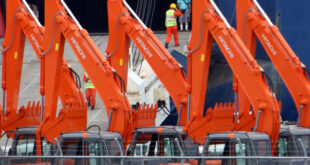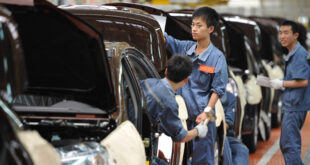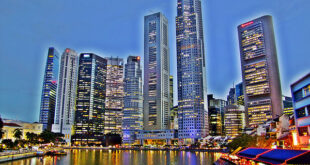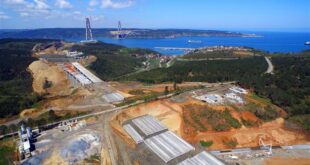Based on advance estimates from the Ministry of Trade and Industry, the Singapore economy contracted by 0.6 per cent on a year-on-year basis in the first quarter of 2013. On a quarter-on-quarter basis, the economy contracted by 1.4 per cent.
SINGAPORE: The Singapore economy contracted by 0.6 per cent on a year-on-year basis in the first quarter of 2013, according to advance estimates from the Ministry of Trade and Industry.
On a quarter-on-quarter basis, the economy contracted by 1.4 per cent. This was due to a sharp decline in manufacturing.
The numbers undershot market expectations of 1 per cent growth.
Economists say full-year economic growth is unlikely to hit the upper end of the 1 to 3 per cent official growth forecast.
Despite the contraction in Q1 GDP, the Monetary Authority of Singapore (MAS) says the economy should grow at a modest pace this year, as external demand recovers.
It is sticking with a tight monetary policy – allowing for a modest and gradual appreciation of the Singapore dollar.
The central bank has also lowered its inflation forecast for the year, reflecting weaker price increases in recent months.
Core inflation, which excludes housing and private transportation costs, is expected to come in at 1.5 to 2.5 per cent – down from MAS’ earlier estimates of 2 to 3 per cent.
The MAS has also lowered the CPI-All Items inflation rate to 3 to 4 per cent – down from the 3.5 to 4.5 per cent forecast previously.
Economists see full-year GDP growth of up to around 2%
After growing at around 50 per cent per year for the past four years, Asiawide Print Holdings sees its revenue growth slowing to 20 per cent in 2013.
The printing firm, which employs 52 people, makes S$5.5 million a year.
Asiawide Print Holdings’ chief business officer, Terence Hong, said: “When sales are going down, the budget for marketing collaterals will greatly shrink. So for some MNCs, (our) experience is that for this year they’ll have a low marketing budget, and for some of the smaller companies, they’ll have zero marketing budget. So overall we will experience a slower growth, together with them.”
Still, Asiawide is in a better position than than many Singapore companies, which are export-oriented. Domestic sales account for 95% of its revenue.
Over the past year or so, domestically driven sectors like construction and services have helped prop up GDP growth in the face of sluggish external demand.
In the first quarter, construction grew 15 per cent quarter-on-quarter, boosted by a recovery in private sector building activities, while services expanded 1.8 per cent on the back of expansion in the finance and business services sector.
The growth in construction and services sectors helped to offset the 11.3 per cent decline in manufacturing. The sequential decline in manufacturing largely reflected a contraction in the output of the biomedical manufacturing cluster.
On a year-on-year basis, construction grew 7 per cent, services producing industries grew 1.2 per cent while the manufacturing sector contracted by 6.5 per cent.
OCBC’s head of treasury research & strategy, Selena Ling, said: “Within manufacturing, what we see is that biochemicals, especially pharmaceuticals, remains very weak. And you also have a soft patch in electronics extending into the first quarter of this year. So it’s a double whammy. Manufacturing continues to be the main drag on growth.
“The G3 economies including China look to be fairly tepid, so we’re not expecting a very sharp turnaround in terms of external demand. What that means for manufacturing and exports, for Southeast Asian exporters like Singapore, is that we cannot count on manufacturing to be the key driver of growth this year. So that sets the challenge for the domestic sectors in Singapore to be the engines for growth this year.”
Most economists see the global manufacturing cycle rebounding in the second half of the year. This is expected to help pull full-year GDP growth up to around 2 per cent.
– CNA/xq/ir
 Asia Finance News Asia finance news, banking, market analysis, business, Forex, trade, Cryptocurrency as it is happening in Asia. Trusted gateway for Asian financial news.
Asia Finance News Asia finance news, banking, market analysis, business, Forex, trade, Cryptocurrency as it is happening in Asia. Trusted gateway for Asian financial news.





